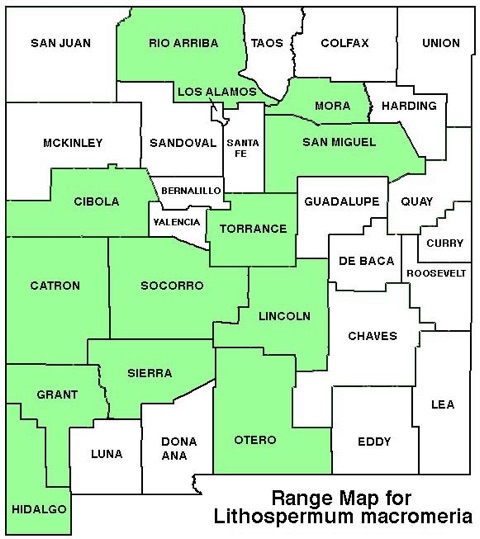WILDFLOWERS OF NEW MEXICO

Long, white, spreading hairs cover the stems and leaves of this 16–36-inch tall, leafy plant. Note the long, tubular hairy flowers and prominently veined leaves.
FLOWER: July–September. Curved or coiled clusters on branching stem tips; flowers 2–3-inches long (50-75 mm), trumped-shaped, greenish-yellow, densely hairy; stamens extend beyond petals. Hummingbirds are the primary pollinators, as well as hawkmoths. The southern var. viridiflora is pollinated by hummingbirds with short bills and has shorter flowers than the northern var. thurberi, pollinated by longer billed hummingbirds.
LEAVES: Basal often withering by flowering; stem leaves alternate. Blades lance-shaped, 3/8–4-inches long (1–10 cm); margins entire, surfaces veined, hairy.
HABITAT: Rocky slopes, riparian areas, woodlands; pine-Gambel oak, spruce forests.
ELEVATION: 6,270–8,858 feet
RANGE: AZ, NM.
SIMILAR SPECIES: The long, tubular, yellowish-green flowers and oval, hairy, veined leaves distinguish this species from other puccoons
NM COUNTIES: Western half of NM in mid- to high-elevation elevation, forested habitats: Catron, Cibola, Grant, Hidalgo, Lincoln, Mora, Otero, Rio Arriba, San Miguel, Sierra, Socorro, Torrance.

GIANT TRUMPETS
LITHOSPERMUM MACROMERIA (MACROMERIA VIRIDIFLORA)
Borage or Forget-Me-Not Family, Boragaceae
Perennial herb

THE CONTENTS OF THIS WEBSITE ARE COPYRIGHTED AND CANNOT BE USED
WITHOUT PERMISSION OF GEORGE OXFORD MILLER



Extended stamens dust pollen on the heads of hummingbirds and hawkmoths who pollinate the plants.


EMAIL ME